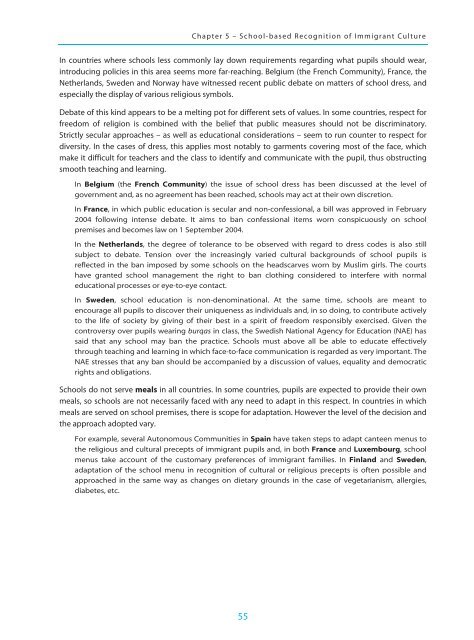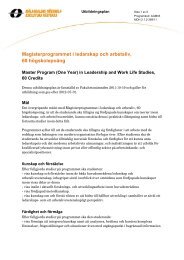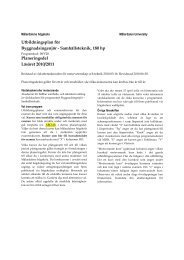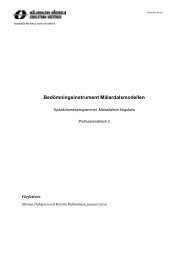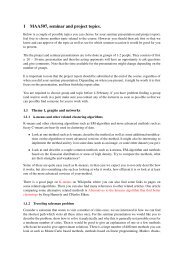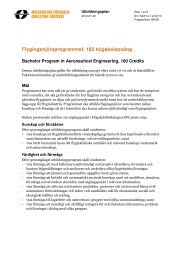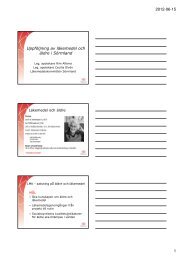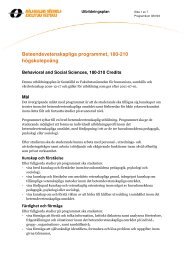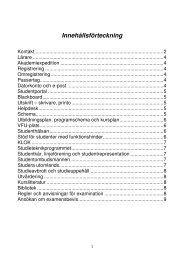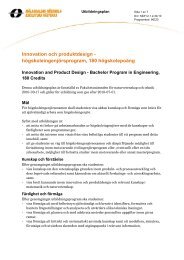Integrating Immigrant Children into Schools in Europe
Integrating Immigrant Children into Schools in Europe
Integrating Immigrant Children into Schools in Europe
Create successful ePaper yourself
Turn your PDF publications into a flip-book with our unique Google optimized e-Paper software.
Chapter 5 – School-based Recognition of <strong>Immigrant</strong> CultureIn countries where schools less commonly lay down requirements regard<strong>in</strong>g what pupils should wear,<strong>in</strong>troduc<strong>in</strong>g policies <strong>in</strong> this area seems more far-reach<strong>in</strong>g. Belgium (the French Community), France, theNetherlands, Sweden and Norway have witnessed recent public debate on matters of school dress, andespecially the display of various religious symbols.Debate of this k<strong>in</strong>d appears to be a melt<strong>in</strong>g pot for different sets of values. In some countries, respect forfreedom of religion is comb<strong>in</strong>ed with the belief that public measures should not be discrim<strong>in</strong>atory.Strictly secular approaches – as well as educational considerations – seem to run counter to respect fordiversity. In the cases of dress, this applies most notably to garments cover<strong>in</strong>g most of the face, whichmake it difficult for teachers and the class to identify and communicate with the pupil, thus obstruct<strong>in</strong>gsmooth teach<strong>in</strong>g and learn<strong>in</strong>g.In Belgium (the French Community) the issue of school dress has been discussed at the level ofgovernment and, as no agreement has been reached, schools may act at their own discretion.In France, <strong>in</strong> which public education is secular and non-confessional, a bill was approved <strong>in</strong> February2004 follow<strong>in</strong>g <strong>in</strong>tense debate. It aims to ban confessional items worn conspicuously on schoolpremises and becomes law on 1 September 2004.In the Netherlands, the degree of tolerance to be observed with regard to dress codes is also stillsubject to debate. Tension over the <strong>in</strong>creas<strong>in</strong>gly varied cultural backgrounds of school pupils isreflected <strong>in</strong> the ban imposed by some schools on the headscarves worn by Muslim girls. The courtshave granted school management the right to ban cloth<strong>in</strong>g considered to <strong>in</strong>terfere with normaleducational processes or eye-to-eye contact.In Sweden, school education is non-denom<strong>in</strong>ational. At the same time, schools are meant toencourage all pupils to discover their uniqueness as <strong>in</strong>dividuals and, <strong>in</strong> so do<strong>in</strong>g, to contribute activelyto the life of society by giv<strong>in</strong>g of their best <strong>in</strong> a spirit of freedom responsibly exercised. Given thecontroversy over pupils wear<strong>in</strong>g burqas <strong>in</strong> class, the Swedish National Agency for Education (NAE) hassaid that any school may ban the practice. <strong>Schools</strong> must above all be able to educate effectivelythrough teach<strong>in</strong>g and learn<strong>in</strong>g <strong>in</strong> which face-to-face communication is regarded as very important. TheNAE stresses that any ban should be accompanied by a discussion of values, equality and democraticrights and obligations.<strong>Schools</strong> do not serve meals <strong>in</strong> all countries. In some countries, pupils are expected to provide their ownmeals, so schools are not necessarily faced with any need to adapt <strong>in</strong> this respect. In countries <strong>in</strong> whichmeals are served on school premises, there is scope for adaptation. However the level of the decision andthe approach adopted vary.For example, several Autonomous Communities <strong>in</strong> Spa<strong>in</strong> have taken steps to adapt canteen menus tothe religious and cultural precepts of immigrant pupils and, <strong>in</strong> both France and Luxembourg, schoolmenus take account of the customary preferences of immigrant families. In F<strong>in</strong>land and Sweden,adaptation of the school menu <strong>in</strong> recognition of cultural or religious precepts is often possible andapproached <strong>in</strong> the same way as changes on dietary grounds <strong>in</strong> the case of vegetarianism, allergies,diabetes, etc.55


